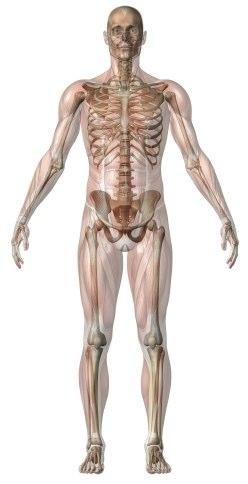Newsletter January 2013
General Wellbeing - Overuse injuries and poor posture, joining the dots.
Apologies if these topics are becoming a well travelled theme in my newsletters, but I feel that aside from pain caused by physical trauma such as an impact, or musculoskeletal pain caused by a medical condition, over use symptoms, along with poor posture; are the 'roots' of all general musculoskeletal problems.
For many of us poor posture and over use injuries are a negative feedback loop, by which I mean that once one starts it leads to the other and then vice versa. However, whilst I have addressed both posture and over use injuries separately, I have not as yet, directly linked them together.
Let's take the example of someone who works at a desk and a computer for a majority of their work (typically up to 7 hours a day, 5 days a week). So excluding short trips to the toilet and the coffee machine, that's pretty much 35 hours a week with their body in one position. Now lets assume (and not unreasonably so) that this person does not sit with a perfectly correct posture all day long. In this scenario, what happens is the muscles in body that are responsible for keeping you upright (local & global stabilisers) are unable to do the job on their own, as ordinarily they require a constant 'good' posture to be maintained, otherwise they are not strong enough.
The knock on effect is the muscle groups responsible for mobility and movement (local and global mobilisers) also now have to help with stability and posture, a job they're not designed for.
After a while the mobilising muscles involved in the stability role become stronger, as the body adapts to being seated for long periods, reinforcing and adding to the 'poor' posture initially adopted. A key feature of muscles as they strengthen, is they can shorten, lose flexibility and adopt a new 'memory' (i.e. a position they return to when relaxed).
This is important, because in the long term some of the changes brought about by the 'poor' seated posture start to transfer to the standing posture. For example rounded shoulders, a slightly forward head position and an excessive 'rounding' in the middle of the spine, are all classic signs of a sedentary life.
Let's see how this poor posture then translates to an over use scenario...
Our 35 hour a week desk worker has, after a year or two noticed that they are constantly putting on weight
so they decide to start, or increase their exercise regime. However, the muscle imbalances bought on by their job have already translated into their standing posture. Their head is now constantly slightly forward and therefore has 'stressed out' some of the muscles in the neck. When they start to run this extra stress is then exaggerated, as the head is 'bouncing' and pivoting in front of the torso, rather than on top of it.

The result is the already tired neck muscles were put through an additional work out, rather than being rested. The next day, out of trying to some good, our office worker now has a reduced neck mobility, a tension headache and needs to take pain killers just to be able to work.
All is not lost though, these symptoms can be reduced and avoided, by using a combination of manual therapy (to help reduce the pain and correct the initial imbalance) and the right exercises (to counter the stresses from being seated all day).
